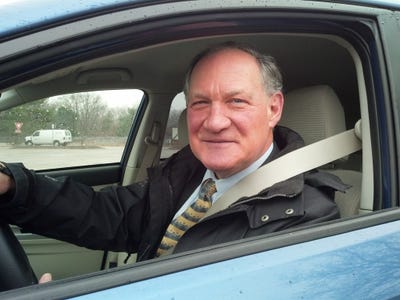What’s Old Is New Again for Car ShoppersWhat’s Old Is New Again for Car Shoppers
Dealers who want to increase profits should expand the parameters of their used-car acquisitions, analyst Karl Brauer says.

Franchised dealers may want to take a page from the independent dealers who sell older used vehicles.
According to an iSeeCars study, many budget-minded consumers are fighting the high cost of newer cars by buying vehicles that are 10 years old and up.
“The good news is that those cars are good enough to be worth more,” iSeeCars executive analyst Karl Brauer tells WardsAuto. “They are showing themselves to be more effective, and that’s making them more valuable.”
The market share for 10-year-old-plus vehicles has increased 30% since 2014, reports iSeeCars
It’s encouraging that 10-plus-years cars are showing the durability as functional forms of transportation,” Brauersays.
But, he adds, with affordability becoming more of an issue (the average price for a new car is $47,433, according to Cox Automotive), “it’s unfortunate that people have to go older to find affordable cars.”
“How are new-car dealers affected?
“The study indicates that with cars they previously wouldn’t have bid on or bothered with, they should probably bother with because there’s an audience out there,” he says.
“Cars they didn’t think were worth the time and effort to put on their lots are now worth it, considering their growing market share. Any dealer that wants to increase sales should be looking at used cars.”
The study analyzed over 169 million used cars sold from January 2014 to June 2024 to identify market trends.
The market share of older cars was fairly stable from 2014 to 2017. It even dipped between 2018 and 2020. But the past four years have seen a steady increase in older-car share, moving from 15.1% of the market in 2020 to 22.7% this year.
The average price of an older car increased from $7,583 in 2014 to $12,194 today, according to iSeeCars.
That rise in prices reflects the auto market in general.
“The trend in vehicle prices represents an inescapable tidal wave,” says Brauer. “When you have new and lightly used car prices spiking, as they have over the past four years, there’s no stopping the wave’s impact on older cars, even for cars produced more than a decade ago.”
Older sedans, wagons and hatchbacks make up 16 of the 20 vehicles with the biggest growth in older-car market share, according to the study.
They carry lower stickers than popular SUVs and pickup trucks and were often used less demandingly by previous owners. That means the older cars “age more gracefully” than large utility vehicles and pickups, Brauer says.
“Their lower cost, lighter use and higher fuel efficiency make them an excellent alternative to larger trucks and SUVs that cost more up front and more to fuel and insure,” he adds.
Today’s older cars are built better, are more advanced and last longer than their predecessors.
In the 1970s and 1980s, it would have been risky – even desperate – to buy a decade-old car without expecting to become a repair-shop regular.
But now, six-digit odometer readings are not unusual.
The data team currently working on iSeeCars’s latest longest-lasting car study is considering moving the threshold from 200,000 miles (320,000 km) to 250,000 miles (400,000 km).
That’s because nowadays, “200,000 miles is too easy to hit,” Brauer says.
About the Author
You May Also Like

